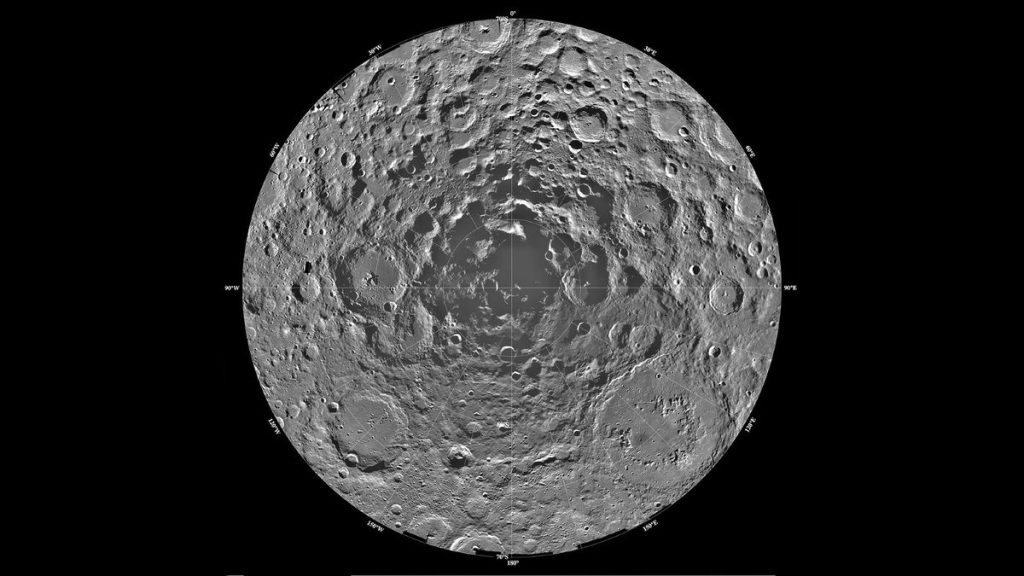New research published in the Earth and Planetary Science Letters journal suggests the moon’s oldest crater, the South Pole-Aitken basin, may be round, as opposed to the oval shape than scientists previously believed it to be.
The circular diameter means the impact that created the South Pole-Aitken basin, which stretches nearly 1,250 miles (2,000 kilometers) across the far side of the moon, may have been much deeper. This new understanding could give scientists important geological resources that reveal early lunar history.
Scientists studying the moon have long thought that the object that struck the moon and created the crater hit at a sharp angle, like stone skipping over water. So, how was it that scientists possibly mistook the shape of one of the moon’s most famous features?
“It’s challenging to study the South Pole-Aitken basin holistically due to its sheer enormousness, which is why scientists are still trying to learn its shape and size,” Hannes Bernhardt, an assistant research scientist in University of Maryland’s Department of Geology who led the study, said in a statement.
“In addition, four billion years have passed since the basin was originally formed and many other impacts have obscured its original appearance,” Bernhardt continued. “Our work challenges many existing ideas about how this massive impact occurred and distributed materials, but we are now a step closer to better understand the moon’s early history and evolution over time.”
The research draws on data gathered by NASA’s Lunar Reconnaissance Orbiter. Bernhardt and his team used the data to find and analyze more than 200 mountain-shaped formations that are scattered around the South Pole-Aitken basin.
The shape of the formations, as well as the distance from one another, signify a more rounded crater that would be created from a vertical impact, “possibly similar to dropping a rock straight down onto the ground,” Bernhardt said.
NASA plans to send astronauts close to the moon’s south pole again as part of the Artemis missions, with Artemis 2, the first mission of its kind since 1972, set to bring astronauts to the lunar surface in April 2026. Bernhardt believes that this new research could hold “significant implications” for the upcoming Artemis missions.
“This circular impact implies that debris from the impact is more equally distributed around it than was originally thought,” Bernardt said, “which means that Artemis astronauts or robots in the South Pole region may be able to closely study rocks from deep within the moon’s mantle or crust — materials that are typically impossible for us to access.”
Previous research published in October in Nature Astronomy dated the South Pole-Aitken basin to between 4.32 and 4.33 billion years old. In that study, researchers determined the basin’s age by dating uranium and lead that was found inside the Northwest Africa 2995 lunar meteorite, which was discovered in Algeria in 2005.

